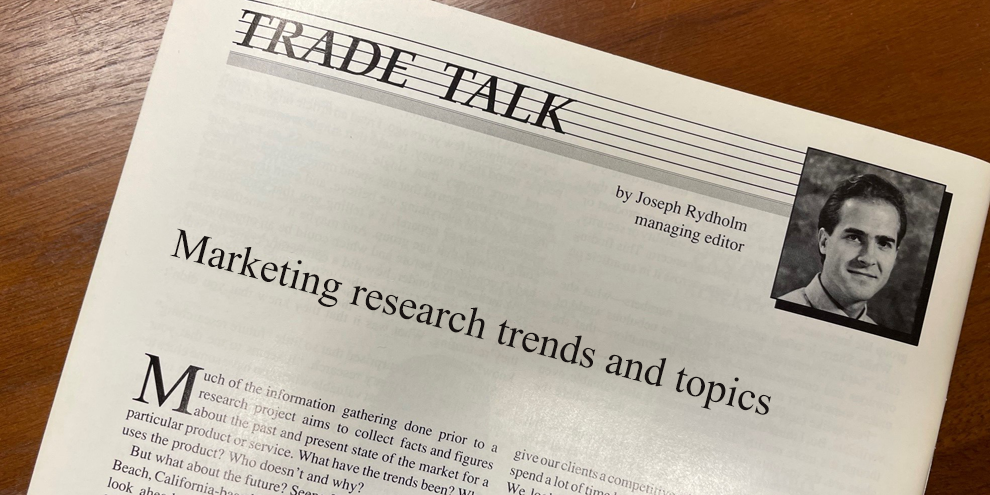It’s been said that you are what you eat. Well, the folks at Claritas Corp. have added a few adages of their own to that thought. Such as, you are what you read, what you watch, what you drive, and, most importantly, where you live.
In his book The Clustering of America (Harper & Row), author Michael Weiss looks at the United States through the lens of PRIZM, the target marketing system developed by Claritas that uses U.S. Census Bureau data and a variety of consumer surveys and opinion polls to create 40 distinct lifestyle depictions of America’s 250,000 neighborhoods.
As a precursor to PRIZM, Claritas founder Jonathan Robbin introduced the Claritas Cluster System in 1974, which gave each of the 40 segments a descriptive name to indicate the lifestyle of its inhabitants (e.g. Shotguns & Pickups, Norma Rae-Ville, Furs & Station Wagons). In addition, each cluster received a ZQ (or ZIP Quality) rating, which is described as a “socioeconomic ranking based on income, home value, education and occupation—a kind of pecking order of affluence.” For example, Blue Blood Estates is at the top with a ZQ of 1, and Public Assistance is at the bottom with a ZQ of 40. This was followed up in 1978 by PRIZM (Potential Rating Index by ZIP Markets), which uses media, product, and opinion surveys to further define the clusters.
The book is an entertaining, thorough, and engrossing trek across the country that shows how much can be learned about a community by determining which magazines they subscribe to, catalogs they order from, and beverages they drink. We are a nation of consumers, after all, and whether we like it or not, much of how we define ourselves comes from the things we buy.
Weiss makes it clear that you’re doing more than just ordering a sweater when you call the toll-free number in your Land’s End catalog, or send off a check for that subscription to Field & Stream. You’re making a lifestyle statement.
Though Weiss discusses the theory behind the cluster system and some of the many uses it has been put to, his primary interest is sociological. Between December 1985 and February 1987, he crisscrossed the country, traveling to 75 communities, racking up 50,000 miles of airplane and automobile travel in the process. In each town he talked to community leaders, store owners, reporters, librarians, clergymen and typical residents, to gain insight into their lives. He takes this information and, using the clusters as a guide, incorporates consumer and economic trends with historical, political, and pop cultural information to paint a vibrant picture of the U.S. and its people.
In the context of broader categories and issues such as spending habits, employment, relationships and family structure, leisure time, and politics, he shows us towns like Coon Rapids, Minn., a Blue-Chip Blues neighborhood where the good life is a family car, a deck in the backyard and nice dinner out once in awhile; and Dalton, Georgia, a Norma Rae-Ville cluster where life isn’t quite so comfortable for many of the townspeople, who spend their lives trying to make a living in minimum wage jobs.
In addition to numerous charts and cluster maps on everything from voting habits to mayonnaise preference, Weiss provides quick-reference-style capsule views of each of the 40 clusters, giving information on demographics, politics, and tables of preferences in lifestyle, food, magazine/newspaper, automobile, and television show choices. The section “Changing Clusters” looks at how each new batch of census data has altered the PRIZM system by adding new clusters and eliminating those that are no longer relevant. Weiss also offers some predictions on what changes the upcoming 1990 Census will
bring.
A particularly useful chapter for marketers and those involved with research is “The Myth of the Average American,” in which Weiss looks at the “unshakable dominance of the Average American in marketing research,” questioning just how average life is in Middle America, and whether the region’s values should be so easily assumed to mirror those of the rest of the country.
Also, for those who are bombarded daily with statistics on the American Public, The Clustering of America provides a valuable look into the lives of the people whose tastes and decisions are represented by those numbers. It’s the use of this kind of information, according to recent Advertising Age article (Feb. 13, p. 3)—which blames some recent marketing blunders on a lack of insight into consumer tastes—that could be the difference between the success and failure of a marketing campaign.
And, without conjuring up strains of “The Star Spangled Banner” here, it’s just plain interesting to find out how other U.S. citizens feel about life in the United States. One of the most enjoyable things about the book is finding out how you’re different—and similar—to the people in your cluster.
Because although we Americans like to flaunt our individuality, as Weiss points out, “For all our local idiosyncrasies, The Clustering of America shows that neighborhoods separated geographically can be virtually identical in lifestyle. California and New Jersey may be thousands of miles apart, but the cluster system illustrates that Palo Alto and Princeton have much in common. Both classified as Money & Brains communities, they share a populace of white-collar professionals and technocratic executives, swank homes valued at more than $200,000, and high subscription rates to Architectural Digest and Town & Country. Perrier fizzes in their fridges. Invitations to Republican fundraisers arrive in the mail. On a cluster map, people who live 3,000 miles apart yet share the same neighborhood type have more in common with each other than with those people
who live only three miles away.”
